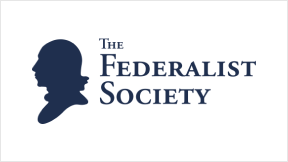Facts of the Case
A group of commercial fishermen who regularly participate in the Atlantic herring fishery sued the National Marine Fisheries Service after the Service promulgated a rule that required industry to fund at-sea monitoring programs at an estimated cost of $710 per day. The fisherman argued that the Magnuson-Stevens Fishery Conservation and Management Act of 1976 did not authorize the Service to create industry-funded monitoring requirements and that the Service failed to follow proper rulemaking procedure.
The district court granted summary judgment for the government based on its reasonable interpretation of its authority and its adoption of the rule through the required notice-and-comment procedure. The U.S. Court of Appeals for the D.C. Circuit affirmed.
Questions
Does the Magnuson-Stevens Act authorize the National Marine Fisheries Service to promulgate a rule that would require industry to pay for at-sea monitoring programs?
Should the Court overrule Chevron v. Natural Resources Defense Council or at least clarify whether statutory silence on controversial powers creates an ambiguity requiring deference to the agency?
Loper Bright Enterprises v. Raimondo and Relentless, Inc. v. Department of Commerce - Post-Argument SCOTUScast
John Vecchione
On January 17, 2024 the Supreme Court heard oral arguments in Loper Bright Enterprises v. Raimondo...
Is the Administrative State Inevitable? Loper, Chevron, and the “Abnegation” of Law
Last month, the Supreme Court granted cert in Loper Bright Enterprises v. Raimondo. Though the case...
Deep Dive Episode 285 - Loper Bright and the Next Steps for Chevron Deference at the Supreme Court
Regulatory Transparency Project's Fourth Branch Podcast
This Term, the Supreme Court will hear Loper Bright Enterprises v. Raimondo—a case concerning judicial...
Is the NLRB Unconstitutional? The Courts May Finally Decide.
This term, the U.S. Supreme Court is set to hear three major cases involving the...
Chevron Is Dead, Long Live Chevron
The Supreme Court has agreed to revisit Chevron v. Natural Resources Defense Council (1984), the...
Congress Should Prepare to Lead on Regulation
The Supreme Court recently ended President Biden’s student loan forgiveness program, ruling that federal law...
Is Glacier Northwest the Tip of the Iceberg?
Glacier Northwest created no new doctrine. But it may still signal a new direction for labor law.
Nowadays, labor-law cases are a rare sight at the Supreme Court. The Court usually takes...
Starbucks v. McKinney: The Supreme Court Taps the Brakes on Injunctive Relief for the NLRB
Federal agencies such as the National Labor Relations Board (NLRB), Federal Trade Commission (FTC), and...
Chevron—Complicated, Start to Finish
Federalist Society Review, Volume 23
A Review of Thomas W. Merrill, The Chevron Doctrine: Its Rise and Fall, and the...
Has Chevron Step One Stepped to Center Stage?
Unanimous Supreme Court rulings are always less likely to generate headlines. So, in a term...
Why Scalia Was Wrong About Chevron
Not since the New Deal era has the scope and reach of the modern administrative...
Chevron, The Nondelegation Doctrine, and Tobacco
Administrative Law Practice Group Newsletter - Volume 3, Issue 1, Spring 1999
Federalist Society members tend to applaud the Supreme Court's Chevron doctrine,1 because it seeks to...
The Death of Deference: Supreme Court Overrules the Chevron Doctrine
In a move long anticipated by many court watchers, the Supreme Court on June 28,...
Congress and the Future of Agency Authority: A Discussion of Three Major Administrative Law Cases and Their Implications for Congress
Capitol Hill Club300 First St SE
Washington, DC 20003








.jpg)











